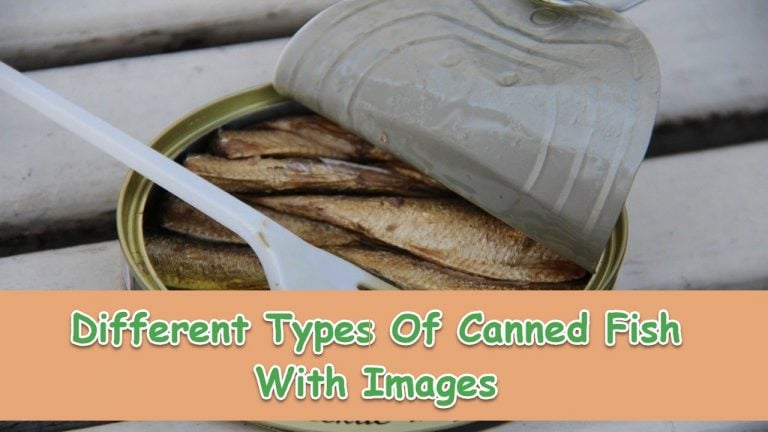17 Different Types Of Nuts With Images
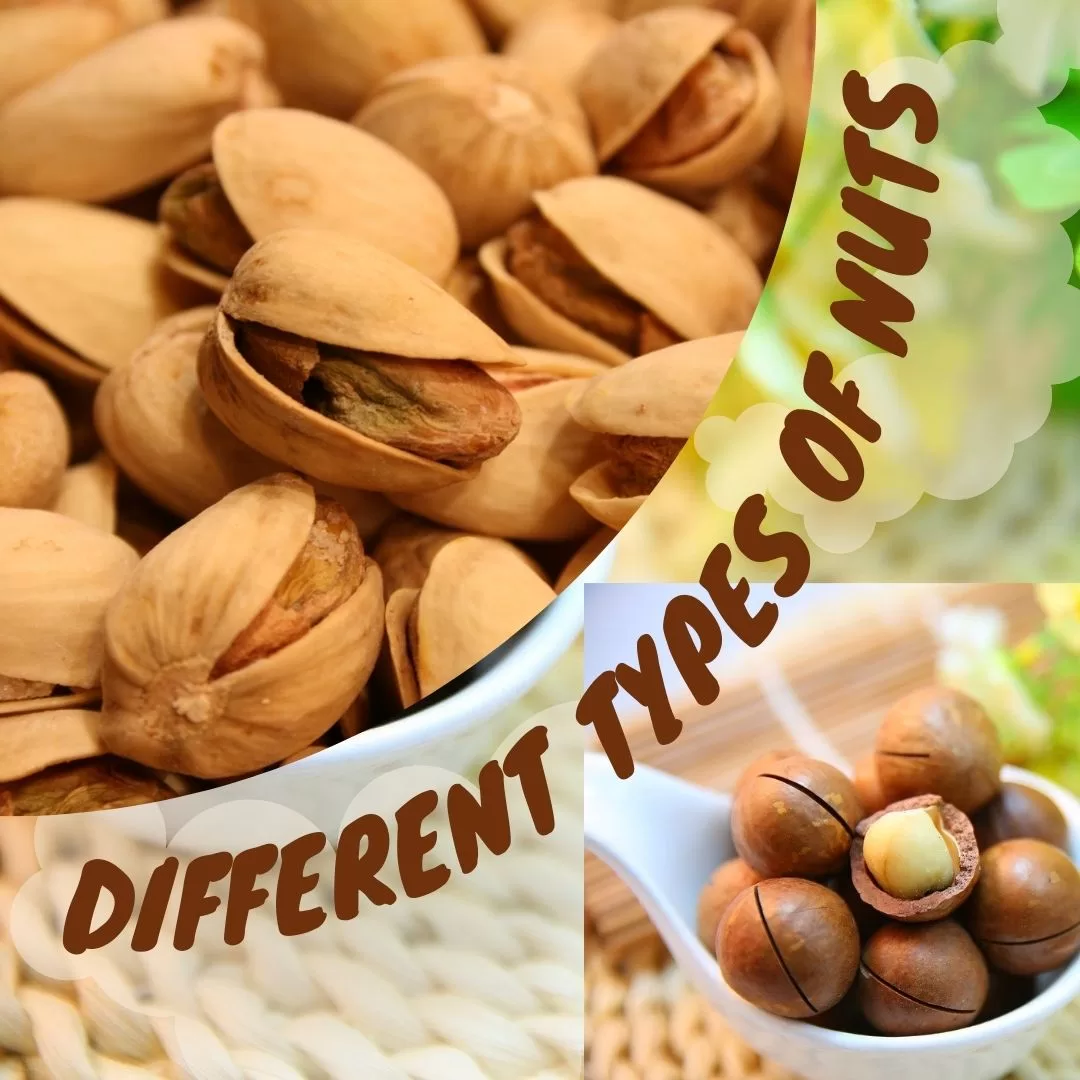
A nut is a fruit that consists of a hard shell that protects the edible kernel inside. In culinary and for its usage, dry seeds are referred to as nuts but botanically speaking nuts are single seeds wherein the fruit or the shell does not open to release the seeds. In this nut guide, let us talk about the different types of nuts, as well as its nutritional facts.
Different Types Of Nuts
There are a wide varieties of foods that has the word “nut” on its name such as peanut that is not actually a nut but a legume since it grows in a pod underground as compared to Cashew nuts that grows on a trees that is why is it considered to be a seed. Listed below are the different types of nuts.
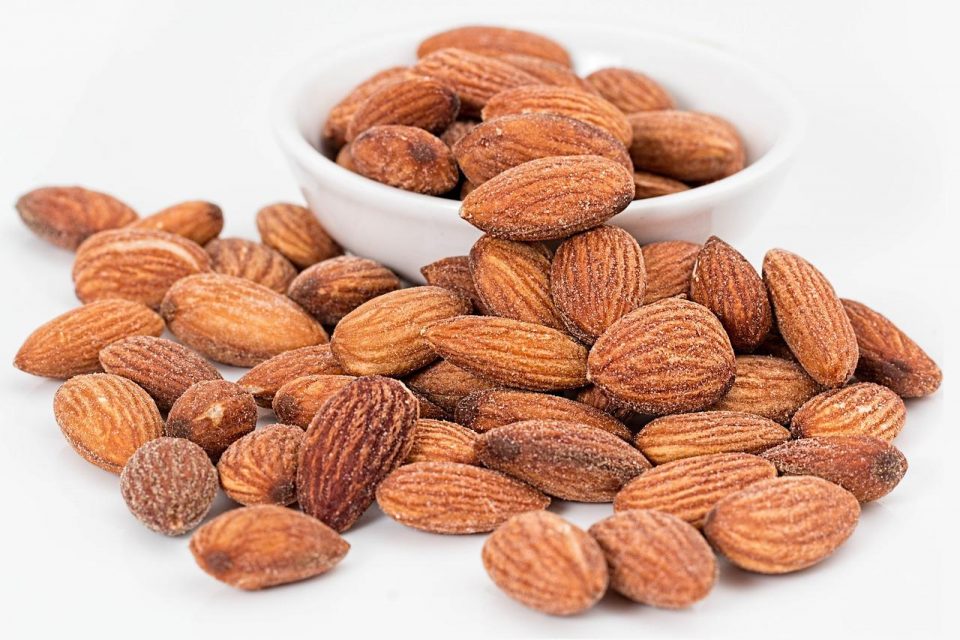
Almonds
Almonds are not nuts but technically speaking it is a seed because it comes from the almond tree. These are hard nuts but they are actually sweet. Almonds are one of the most popular nuts, not to many delicious nuts, nowadays.
Almonds are used to create almond milk, almond butter, almond oil and almond flour (alternative as gluten free flout) . It is also used as toppings to vegetables sides such as green beans. Almonds are also used in adding to trail mixes and making other desserts such as tarts. Almonds, when finely chopped, can be used as toppings to your salads for that extra nutty crunch.
Almond Nutritional Facts (per cup):
- Protein : 30 grams
- Fat: 71 grams
- Carbohydrates: 30 grams
- Fiber: 17 grams
- Sugar: 6 grams
- Potassium : 1048 grams
- Sodium: 1 gram
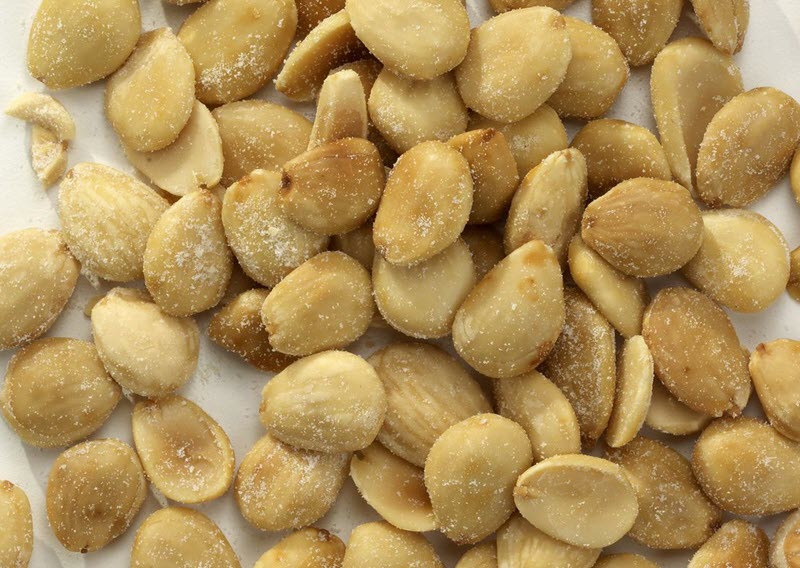
Marcona Almonds
If you are familiar with Macadamia nuts, it has the same appearance with Marcona Almonds. This types of nut is also referred to as Queen of Almonds.
Marcona Almonds is usually added on a charcuterie boards together with cheese, so it is possible that you may have eaten Marcona Almonds before. A delicious snacks that everyone will surely love because of how sweet this nut tastes like.
Marcona Almonds Nutritional Facts (per cup):
- Protein : 24 grams
- Fat: 88 grams
- Carbohydrates: 24grams
- Fiber: 16 grams
- Sugar: 12 grams
- Sodium: 560 milligrams

Brazil nuts
Another types of nuts is called Brazil nuts that comes from Brazil tree nuts hence the name. This type of nuts originates from the rainforest and usually grows in hot or humid and wet environment of South Africa (Bolivia, Peru and Brazil).
Brazil nuts are large nut that is smooth and has a buttery flavor. Most of the time, brazil nuts are eaten as raw nuts or blanched, however this nuts are eaten it still has the same delicious buttery taste. Although, before the edible seeds can be eaten you must first crack open the hard shell that protects the seeds inside.
Brazil nuts are a great source of vitamins such niacin, calcium, vitamin e, Iron and Selenium too. In fact, if you want to increase selenium level (antioxidant) in your body, eating one Brazil nut a day will definitely increase selenium levels. Also, eating at least 4 to 5 Brazil nuts a day helps to lower bad cholesterol.
Brazil nuts Nutritional Facts (per cup):
- Protein : 16 grams
- Fat: 80 grams
- Carbohydrates: 16 grams
- Fiber: 8 grams
- Sugar: 4 grams
- Sodium: 0 milligrams

Cashew Nuts
Cashew nuts are kidney shaped or C-shaped seeds (yes, cashew nuts is not a nut, technically) that comes from the cashew tree that originates in Brazil. It usually appears as white in color.
These are popular nuts that are a good source of healthy fats, nutrients and minerals such as Protein, Vitamin K, Calcium, Copper, Magnesium, and Potassium. Aside from that, cashew nuts are known for as a good source of beta carotene. Ideally, the body converts beta carotene into Vitamin A that is the vitamin needed for a person’s good eyesight.
Cashew nuts are usually used to make cashew milk and nut butter simply because it has a buttery yet salty taste. This nut is also best for simply snacking, used as a garnish in stir-fry dishes, also used for when making creamy sauces.
Cashew nuts Nutritional Facts (per cup):
- Protein : 20 grams
- Fat: 52 grams
- Carbohydrates: 32 grams
- Fiber: 4 grams
- Sugar: 4 grams
- Sodium: 344 milligrams
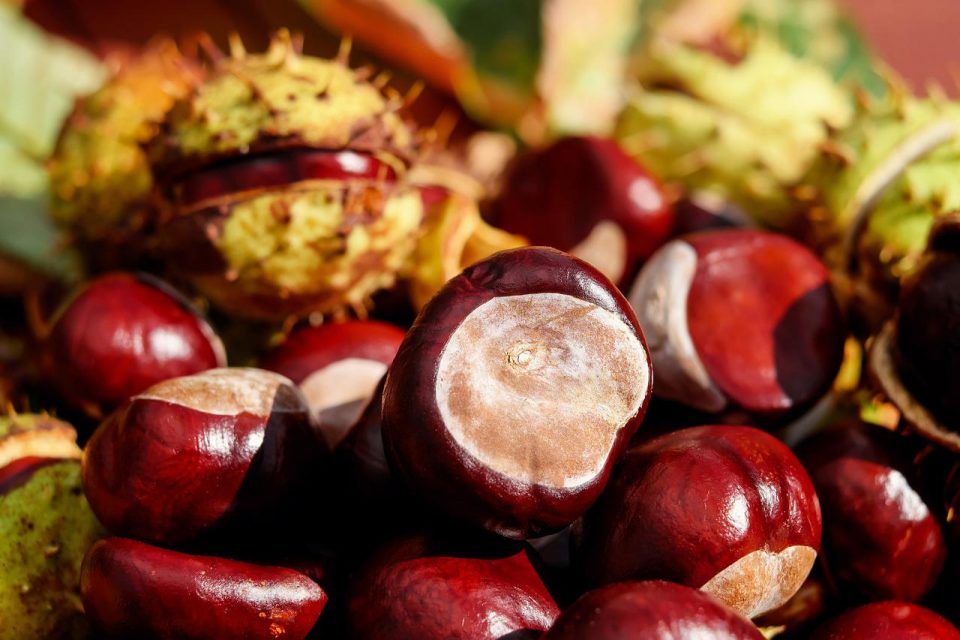
Chestnuts
Another type of nuts is known as Chestnuts. This are dark colored brown nuts that you need to peel the skin for that soft white flesh that you will eat.
Many individuals love to roast Chestnuts, just make sure not to eat the skin or its shell. After chestnuts are cooked (boiled or roasted), it will have a buttery taste and will have a soft texture similar to that of a potato.
Eating chestnuts can be beneficial to your body simply because it is low in calories but high fiber content. Although since it does not contain high amount of fats (healthy ones), this type of nuts aren’t as healthy as other nut varieties.
Chestnuts are usually used to as roasted nuts, to coat together with chocolates and often used in baked goods and making tarts.
Chestnut Nutritional Facts (per cup):
- Protein : 2.45 grams
- Fat: 1.88 grams
- Carbohydrates: 66 grams
- Sodium: 3 milligrams
- Potassium: 727 milligrams
- Magnesium: 45 milligrams
- Vitamin C: 60 milligrams

Hazelnuts
This are small round tree nuts but relatively sweet nuts that have a crunchy texture. Hazelnuts have thin brown skin that comes off when nuts are cooked.
Hazelnuts are grown mostly in North America, Asia and Europe. Most of the time it grows in bushy trees. After hazelnuts are picked up, it usually begins to dry out within the 24 hour period. After harvested, it can be stored for several months still with its shells intact however for eating purposes it should be eaten within weeks.
Hazelnuts is popularly known for as the type of nut that makes Nutella simple delicious. Aside from that, these nuts are also used to make desserts. Hazelnuts are good source in vitamins and minerals too. It is known to help lower bad cholesterol in the body and helps reduce inflammation too. This nuts helps keep the heart healthy with healthy fats content.
Hazel Nuts Nutritional Facts (per cup):
- Protein : 20 grams
- Fat: 82grams
- Carbohydrates: 22 grams
- Fiber: 13 grams
- Sugar: 6 grams
- Sodium: 0 gram
- Potassium: 918 milligrams
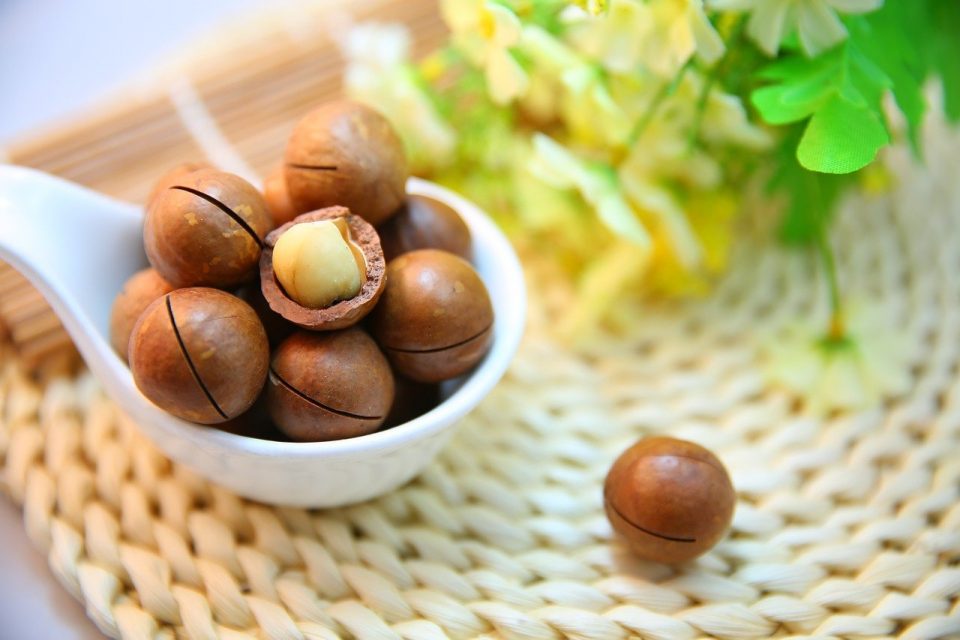
Macadamia nuts
Macadamia nuts is considered to be one of the most expensive nuts simply because it would usually take at least 7 years for macadamia nut tree to produce them. And Yes, since it grows on a tree, macadamia nuts is technically a seed than that of a nut.
Macadamia nuts are grown primarily in Hawaii and Australia. In preparing the nuts, to prevent it from molding the skin or the shell should be removed within the next 24 hours after harvest.
Macadamia nuts have high healthy fats, therefore consuming this nuts helps in lowering bad cholesterol levels in the blood and known to be good heart health too.
One of the most uses of Macadamia nuts is when baking cookies, brownies and other desserts such as fudge, muffins and granola bars.
Macadamia nuts Nutritional Facts (per cup):
- Protein : 10 grams
- Fat: 101 grams
- Carbohydrates: 18 grams
- Fiber: 11 grams
- Sugar: 6 grams
- Sodium: 7 gram
- Potassium: 492 milligrams
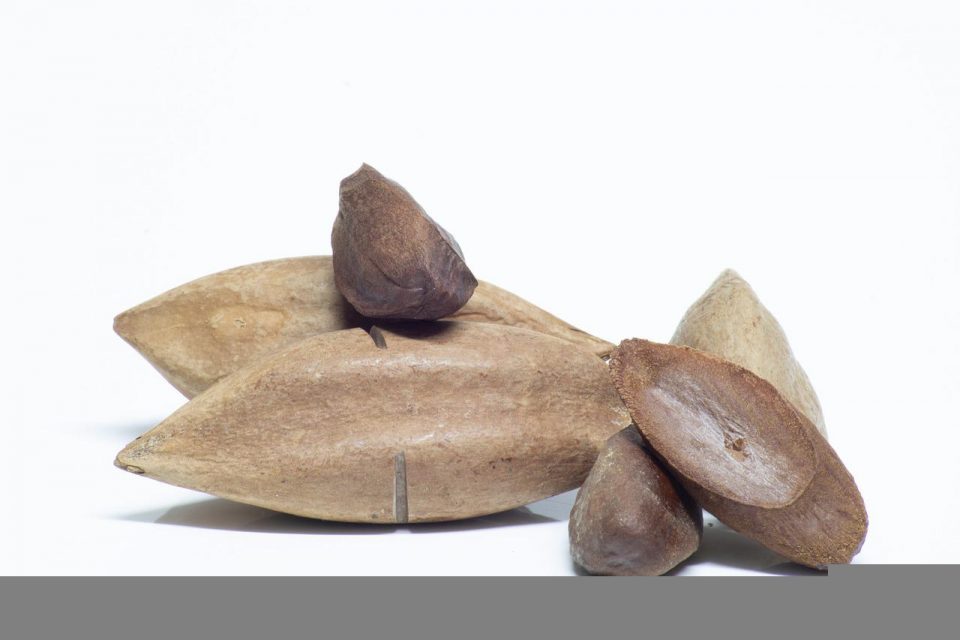
Pili nuts
Pili nuts is a less popular type of nuts, as a matter of fact you would not normally recognize it right away though it similar to almonds but may appear to be smaller in size.
The taste of Pili nuts is similar to sunflower seeds or pine nuts. And since it has a more lighter taste, it is commonly seen added to salads.
Pili nuts Nutritional Facts (per cup):
- Protein : 12 grams
- Fat: 95 grams
- Carbohydrates: 4.78grams
- Sodium: 4 milligrams
- Phosphorus : 609 milligrams
- Potassium: 608 milligrams
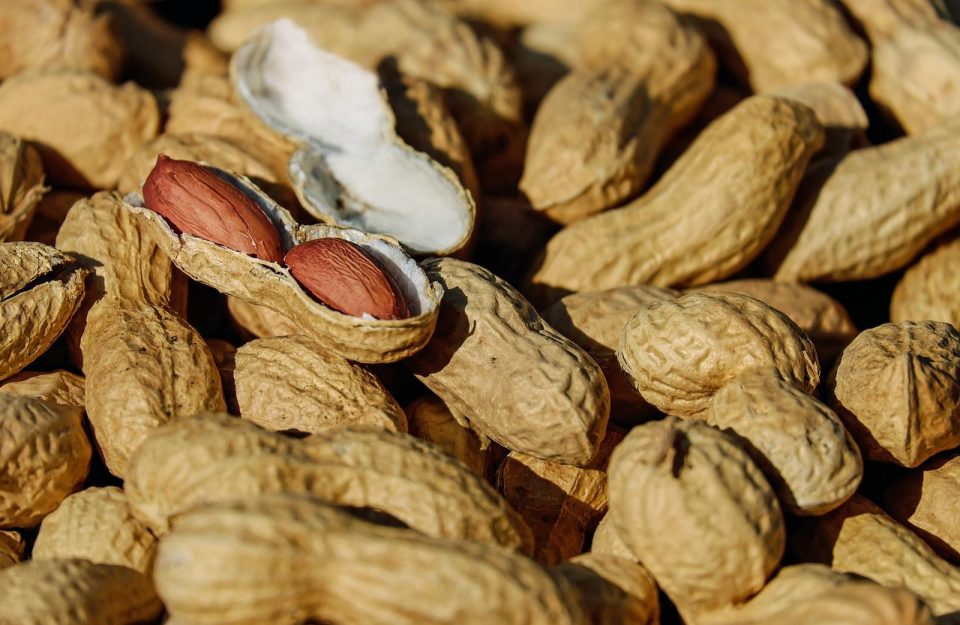
Peanuts
As previously mentioned, peanuts is not technically a nut but rather a legume that is similar to beans and peas. However, peanuts are commonly used in most of the cuisines everywhere. Peanuts do not actually grow on trees as compared to other nuts such as brazil nuts, walnuts or almonds, but rather grows in the ground enclosed in a shell.
Despite not being a nut but a legume, most individuals would regard this type of nut as the most popular and favorites among the rest of the nuts. There are numerous ways to eat peanuts you can either make it into dry roasted nuts, raw peanuts, salted peanuts and the favorite is turning it into tasty peanut butter.
However, make sure to avoid peanuts that are roasted in cooking oil and or are salted as its sodium content may not be good for the body.
PeanutsNutritional Facts (per cup):
- Protein : 37 grams
- Fat: 74 grams
- Sugar: 6.89 grams
- Sodium: 26 milligrams
- Potassium: 1029 milligrams
- Magnesium: 245 milligrams
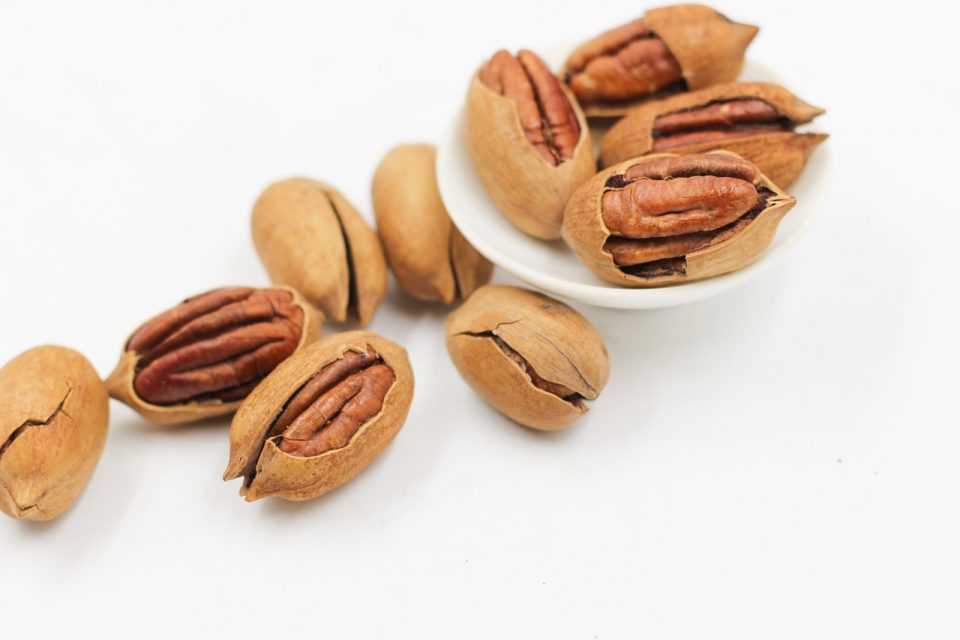
Pecans
Pecan nuts are brown nuts in a shell. It comes from pecan tree. Although pecan nuts may look weird in terms of its appearance, but they are actually sweet that is why it is commonly used for in baking desserts and pastries. Though most of the nuts, pecan nuts are eaten raw because of all the health benefits you can get from it.
Pecans typically grow in the South Central side of North America. Pecan nut tree usually grows between 7 to 10 years and will then produce many pecans. The method of harvesting pecan nuts is usually by shaking the trees and picking up the nuts from the ground.
Pecan nuts are delicious, tasty and nutritious nut. If you are into keto diet, pecan nuts is the right nut to consume since it also has low carb content. Pecan Pies is one of the most popular recipe that you can make using Pecan nuts though other recipes includes making pecan cookies, dark chocolate, and candies pecans. You can also add pecan nuts to chicken salad and vegetable salads as well.
Pecans Nutritional Facts (per cup):
- Protein : 9 grams
- Fat: 71 grams
- Carbohydrates: 13 grams
- Fiber: 9 grams
- Sugar: 4 grams
- Sodium: 0 milligrams
- Potassium: 406 milligrams
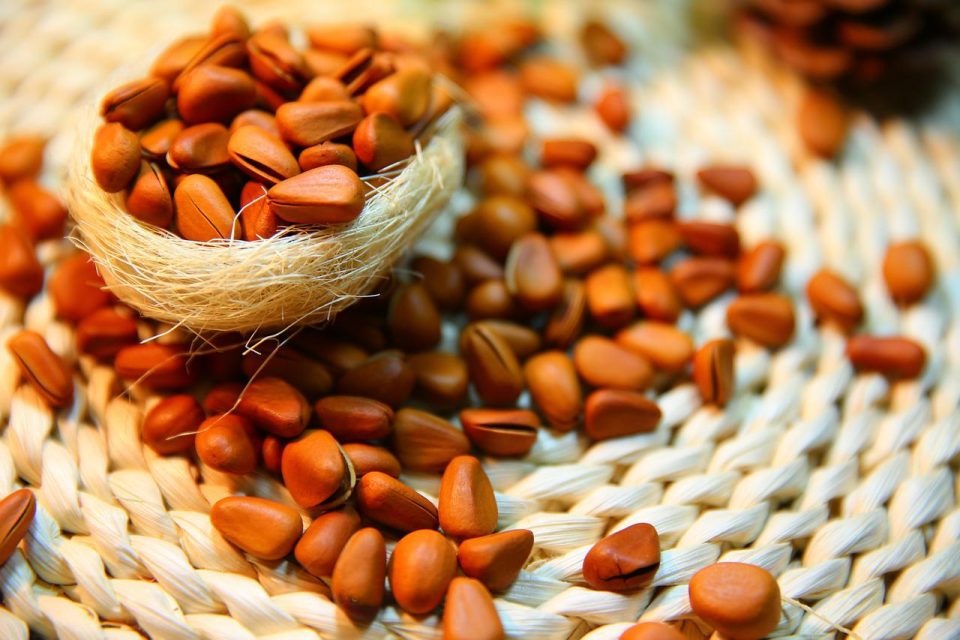
Pine Nuts
Pine nuts is considered to be one of the smallest types of nuts, but are healthy nuts too. Pine nuts is characterized as white elongated nuts that is usually used for toasting and a great addition to leafy green salads. It has a sweet but light flavor especially when toasted.
Pine nuts typically grow in Korea, North America and in Europe. It usually grows on different varieties of pine trees although most of Pine nuts comes from stone pine trees. Pine nuts are usually prepared by drying out the nuts after harvest and then roasted. Although some prefer to eat it raw because of its buttery flavor.
Pine nuts Nutritional Facts (per cup):
- Protein : 18 grams
- Fat: 92 grams
- Carbohydrates: 17 grams
- Fiber: 5 grams
- Sugar: 4.85 grams
- Sodium: 3 milligrams
- Potassium: 805 milligrams
- Magnesium: 339 milligrams

Pistachio Nuts
Pistachio nuts is one of the most rich tasting and delicious types of nuts. It has a bold and strong flavor that is why is it best used to make desserts such as pistachio ice cream. The nut is enclosed in a white and light brown shells, though you should not eat the shells but only the green nuts inside.
Pistachio nuts typically grow in the West region in the United States. It grows on small trees.
Similar to other healthy nuts, pistachio nuts are known also be good for the heart. Studies have shown that those that regularly consume pistachio nuts are lowers the risk of having heart related conditions.
Pistachio nuts Nutritional Facts (per cup):
- Protein : 24.80 grams
- Fat: 55 grams
- Carbohydrates: 33grams
- Fiber: 13 grams
- Sugar: 9 grams
- Phosphorus: 603 mg
- Sodium: 1 milligrams
- Potassium: 1261 milligrams
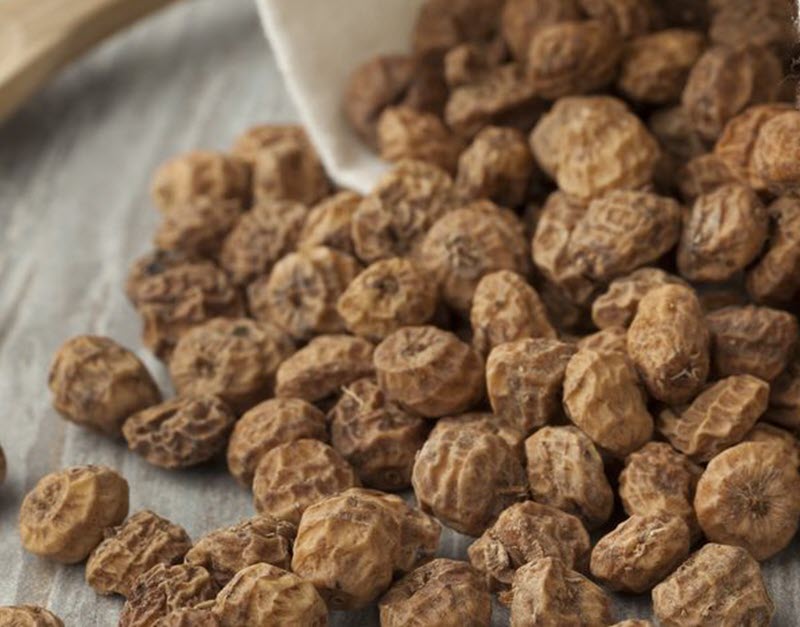
Tiger nuts
This types of nuts is one of the less popular types. This are small, round and typically have a wrinkly feature, it has a similar texture as that of a chickpea. It is often mistaken as a corn puffed cereal as it actually looks like one.
Most of the time, tiger nuts are eaten as a snack but often it is added to green salad and topped on oatmeal as well.
Tiger Nuts Nutritional Facts (per cup):
- Protein : 10.61 grams
- Fat: 37 grams
- Carbohydrates: 100 grams
- Fiber: 52 grams
- Sugar: 47 grams
- Sodium: 0 milligrams
- Potassium: 1140 milligrams
- Calcium : 159 milligrams
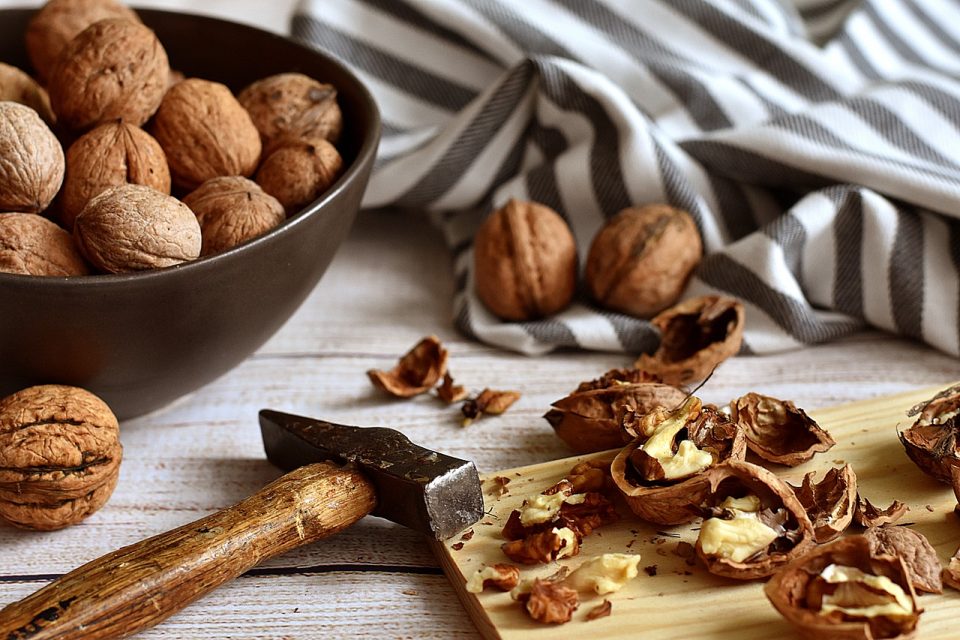
Walnuts
Walnuts is another types of nuts in a shell, though consuming walnuts with its shell still intact can be challenging. It is therefore recommended to purchase the types where shells have already been shelled off.
Walnuts are actually stone fruits that typically grows on large trees commonly seen in countries such as United States, China, Mexico, Iran, Turkey and Ukraine. You can eat walnuts raw but make sure to washed over pressure water and dried out first after harvesting.
Walnuts typically look like peanut brittle because of its shape but this type of nuts soft but also have a crunchy texture.
When making pesto, walnuts are used to replace pine nuts. It is also used in desserts such as pineapple upside cake or can be added to green salads as well.
Walnuts Nutritional Facts (per cup):
- Protein : 20 grams
- Fat: 80 grams
- Carbohydrates: 16 grams
- Fiber: 12 grams
- Sodium: 0 milligrams
- Calcium : 80 milligrams
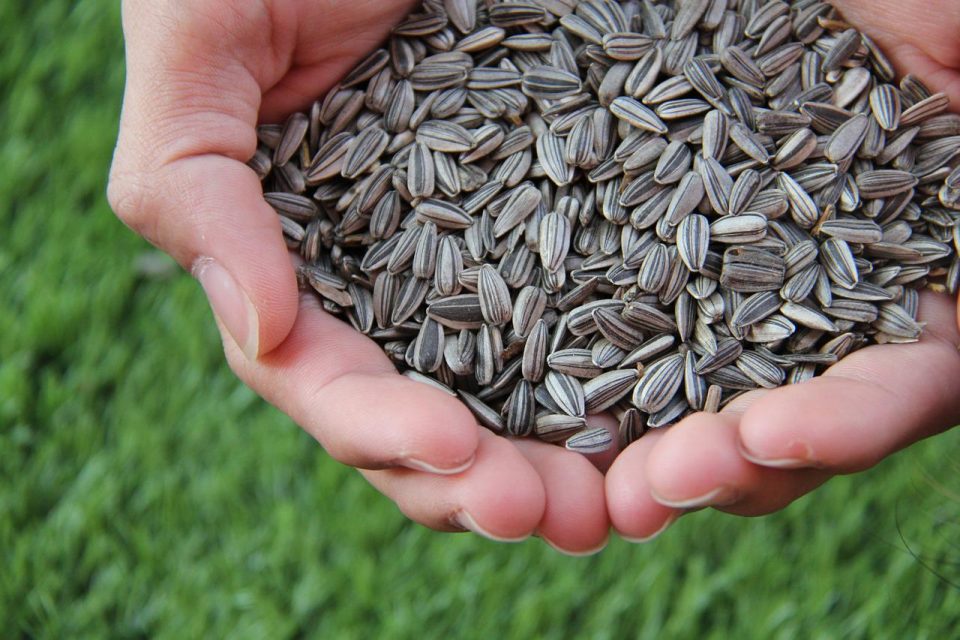
Sunflower seeds
Sunflower seeds typically comes from the sunflower. Before harvesting sunflower seeds from the sunflower plant, it would usually take at least 4 days for the seeds to dry out and eventually fall from the head of the sunflower. That’s the time you pick the seeds from the ground.
Sunflower seeds are usually consumed by removing the shells and eaten raw but there are time when the seeds are roasted. It goes well with other foods as well such as stir-fries, vegetable dishes, cereals and even on yogurts too.
Consuming Sunflower seeds can have health benefits too since the seeds are known to have high content of Vitamin E.
Sunflower Nutritional Facts (per cup):
- Protein : 20.78 grams
- Total Fat: 51.46 grams
- Carbohydrates: 20 grams
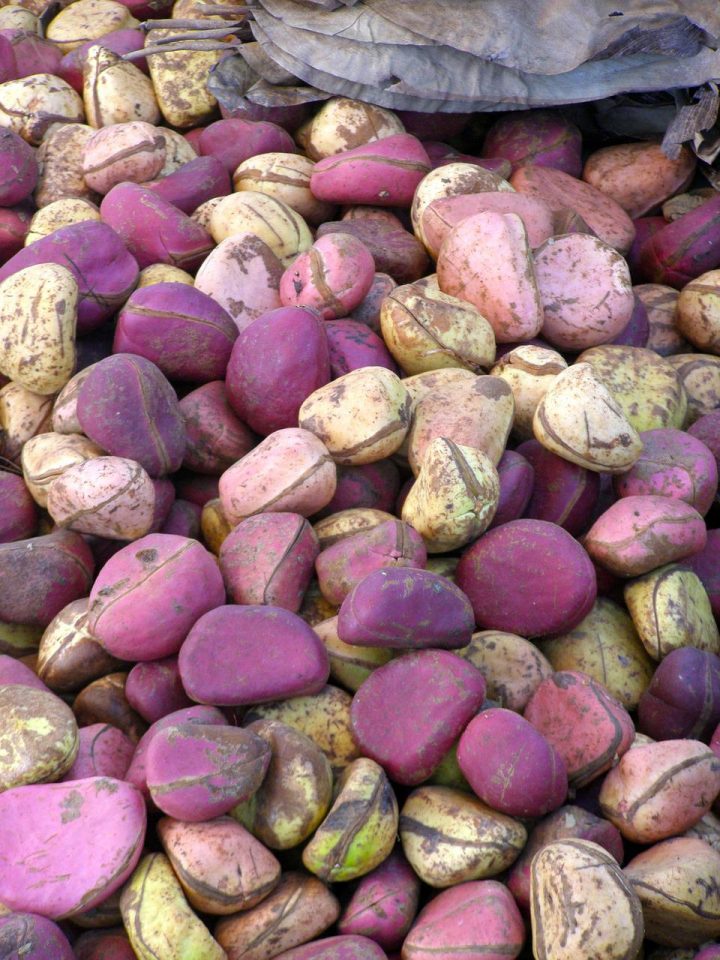
Kola nuts
Kola Nuts is technically a fruit that grows from the Kola tree, usually grows in rainforest climates such as in Africa. Kola Trees are usually 20 meters high and the Kola seeds grows inside the Kola fruit.
Kola Nuts are nuts that contains caffeine that is why it is usually used as a flavoring to beverages such as in soft drinks.
Kola Nuts Nutritional Facts (per cup):
- Protein : 20.78 grams
- Total Fat: 51.46 grams
- Carbohydrates: 20 grams

Sesame seeds
Sesame seeds are small seeds usually used in making hummus. For those with allergies to nuts, you can use sesame seeds as an alternative to nuts. Sesame seeds are crunchy that is why it is often used as toppings to stir fry dishes and green salads.
Sesame seeds are also known to be high in fiber and protein content. Studies have shown that sesame seeds also helps in lowering cholesterol levels in the blood.
How to Store Nuts and seeds
Nuts and seeds are very easy to store by placing them inside an airtight containers. Nuts that are properly stored usually last longer when stored with their shells about 6 months max as compared to storing in the fridge and last up to 3 months and just a month when stored in the panty. Nuts do not last long when allowing to stand at room temperature alone, therefore it is advisable to place the nuts inside the fridge if you want it to last longer that way the heat and light exposure of the nuts will be limited.
Aside from properly storing the nuts, another way to help keep the nuts stay longer is to make sure you buy them fresh.
Another thing, make sure to buy those raw and whole nuts and seeds if you want to keep them staying fresh for a long time. Nuts that have already been toasted, chopped and added to a meal is different from nuts that are stored and could last a long time.
Frequently Asked Questions
In this guide, we have gathered 15 edible nuts but there are still quite a number of nuts that are not mentioned here.
It is difficult to point out which nut is the healthiest because each of the nuts have its own health benefits to your body. When talking about the most healthiest, it goes down perhaps on how you consume the nuts. Eating in moderation to be able to enjoy the full benefits that nuts can offer.
Macadamia nuts is by far the most expensive nut that you can buy. Its price can go as twice or thrice as much as other prices of the nuts in the market.
Yes, consuming nuts of a regular basis can have health benefits. Most nuts are low in carbohydrate but have high good fat content such as rich in omega-3 and omega-6 that helps lower the risk of developing heart diseases.
Nuts are also high in antioxidants that helps in fighting the body’s free radicals that would eventually damage the cells in the body.
Although most nuts have high fat content, it is actually the good and healthy kind of fat such as polyunsaturated fats and monounsaturated fats. Therefore, when nuts are eaten on a regular basis, it can actually help lower your weight.
Scientifically speaking, nuts are fruits with single seeds, a hard shell that protects the seeds inside. Basically, nuts are actually the dry seed of a fruit. Although there are other variety of nuts that is also referred to as fruits.
Most of the nuts are seeds. To simplify, seeds are plant in a shell while nuts on the other hand stays inside the shell until it is shelled off. Most of the time, seeds open on their own while a nut does not open on their own.
Final Thoughts
There are different types of nuts, and seeds. Consuming nuts and seeds can give health benefits to our body. Nuts can be used as a main ingredient to dishes or used as an accompaniment to dishes such as desserts and salads.
With this guide, you will have an idea on each of the types of nuts, its nutritional value and how each nuts are used.
From the list of the types of nuts mentioned in this article, which of these nuts have you tried and which one if your favorite. Lets us know what you think.

